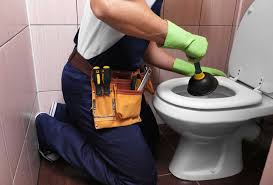Dealing with a toilet that doesn’t flush all the way can be frustrating and inconvenient. Whether it’s a weak flush or incomplete waste removal, this common plumbing issue can stem from various causes. In this article, we’ll explore the reasons behind toilets not flushing all the way, provide step-by-step fixes, and share prevention tips to keep your toilet functioning optimally.Common Causes of Toilets Not Flushing All the Way
- Clogged Drain or Trap: A partial blockage in the drainpipe or toilet trap can restrict water flow, leading to weak flushes.
- Low Water Level in the Tank: If the water level in the tank is too low, there may not be enough water to create a strong flush.
- Mineral Buildup in Rim Jets: Over time, mineral deposits can clog the small holes under the toilet rim, reducing flushing power.
- Faulty Flapper: A worn-out or improperly sealing flapper can release water too quickly, resulting in an incomplete flush.
- Problems with the Fill Valve: A malfunctioning fill valve may not allow the tank to refill properly between flushes.
How to Fix a Toilet That Won’t Flush Properly
- Check for clogs: Use a plunger to clear any obstructions. For stubborn clogs, a toilet auger may be necessary.
- Inspect the water level: The water should be about 1 inch below the overflow tube. Adjust the float if needed.
- Clean the rim jets: Use a small mirror to inspect the rim holes and clean them with a stiff brush and vinegar.
- Test the flapper: Add food coloring to the tank and check if color appears in the bowl without flushing, indicating a leak.
- Adjust the chain: Ensure the flapper chain has about 1/2 inch of slack for proper operation.
Preventive Maintenance TipsTo avoid future problems with your toilet not flushing all the way, consider these preventive measures:
- Regularly clean your toilet bowl and tank to prevent mineral buildup
- Avoid flushing anything other than toilet paper and human waste
- Perform monthly inspections of the flushing mechanism
- Consider installing a water-saving toilet with dual-flush technology
- Address minor issues promptly before they become major problems
When to Call a Professional PlumberWhile many toilet flushing issues can be resolved with DIY methods, some situations require professional assistance:
- Persistent clogs that resist plunging and snaking
- Significant water leaks around the toilet base
- Repeated flushing problems despite troubleshooting
- Old or corroded plumbing components that need replacement
- Sewer line issues affecting multiple fixtures
By understanding why your toilet isn’t flushing all the way and following these troubleshooting steps, you can often resolve the issue without expensive repairs. Regular maintenance and proper usage will help ensure your toilet operates efficiently for years to come.

